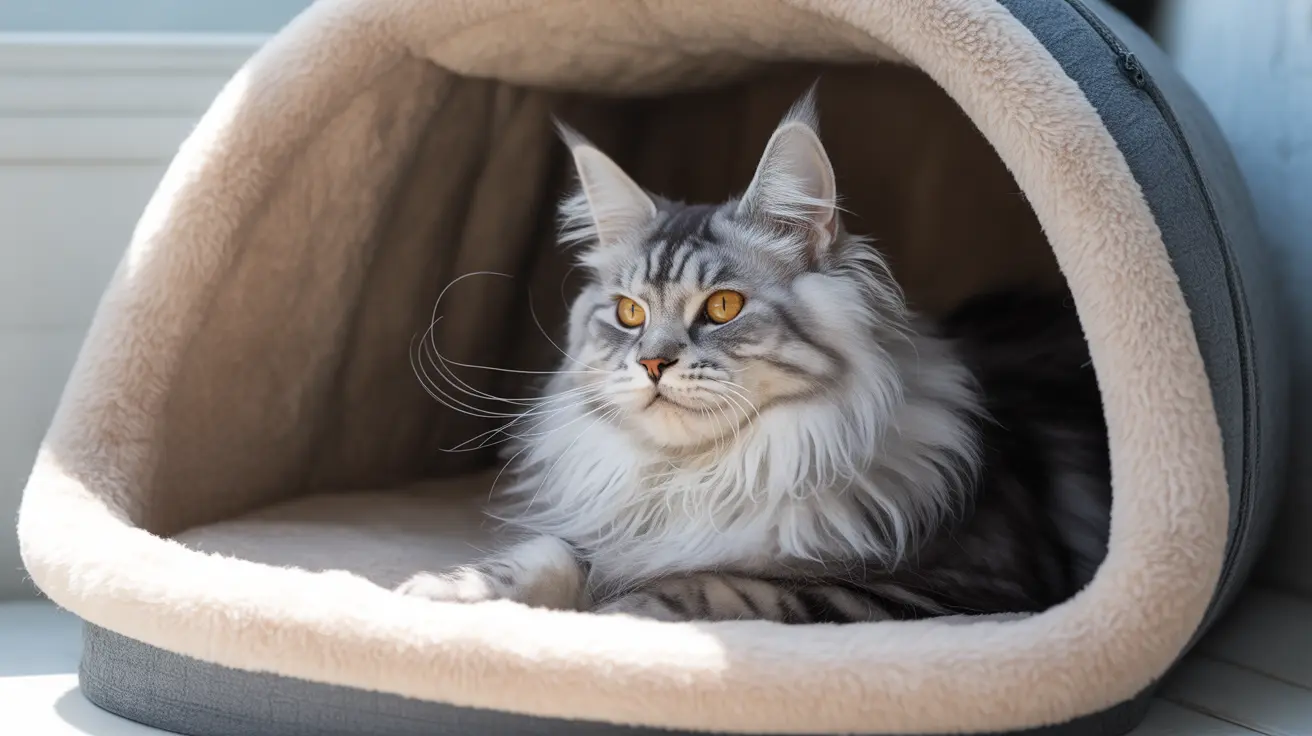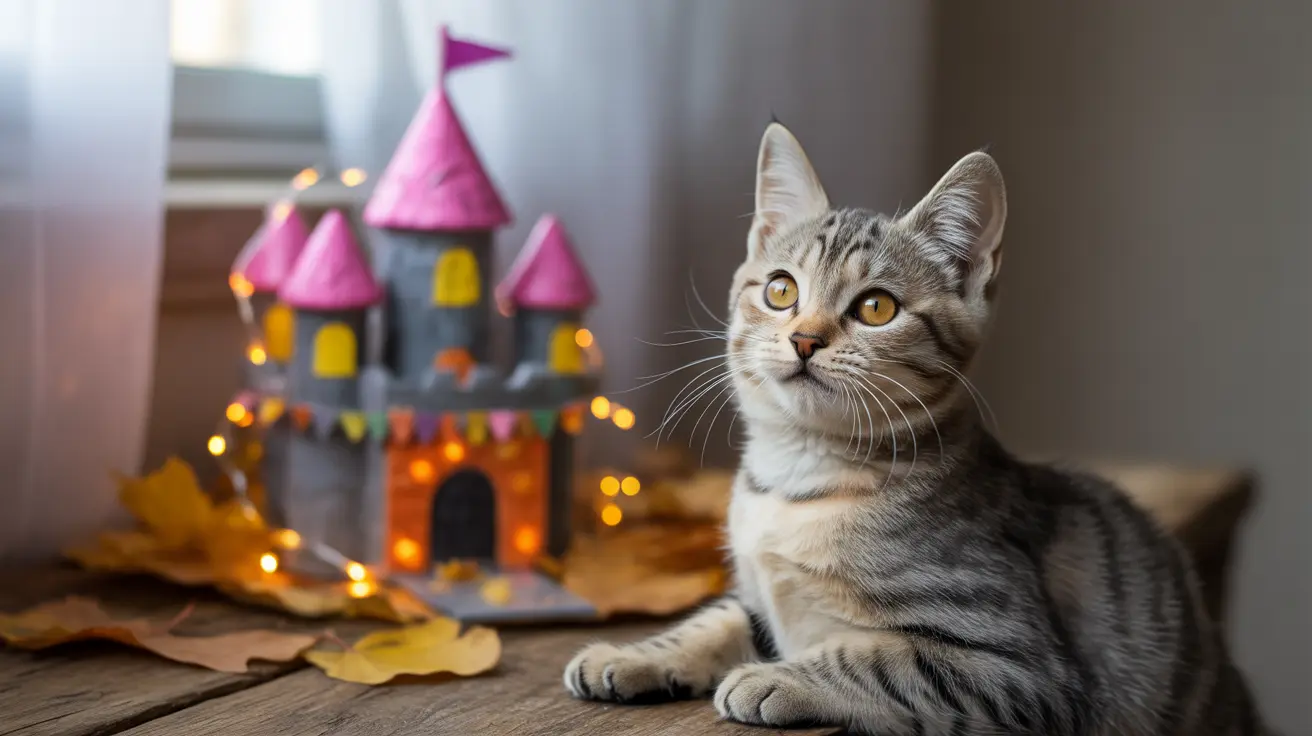How to Teach a Cat to Use a Cat Flap: A Complete Training Guide for Cat Parents
Teaching your cat to use a cat flap can transform both your life and your feline's daily routine, providing them with the freedom to explore outdoors while giving you peace of mind about their safety and access. While some cats naturally take to cat flaps, many require patient, gradual training to overcome their initial hesitation. Understanding the right approach to cat flap training can make the difference between a confident, independent cat and one that remains dependent on you for outdoor access.
The key to successful cat flap training lies in making the experience positive and stress-free for your cat. This comprehensive guide will walk you through proven methods for introducing your cat to their new door, from initial familiarization through complete independence. Whether you're dealing with a curious kitten or a cautious senior cat, the techniques outlined here will help you achieve success while strengthening the bond between you and your feline companion.
Understanding Your Cat's Perspective on Cat Flaps
Before diving into training techniques, it's essential to understand why cats might initially resist using a cat flap. For many cats, doors have always been opened by their human companions, making the concept of pushing through a barrier themselves completely foreign. The flap itself can seem intimidating—it's an unknown object that moves, potentially makes noise, and blocks their view of what lies beyond.
The psychological aspect of cat flap training cannot be overlooked. Cats are naturally cautious creatures, and introducing any new element to their environment requires time and patience. Some cats may view the flap as an obstacle rather than an opportunity, especially if they've had negative experiences with similar barriers in the past. Understanding this perspective helps explain why forcing or rushing the training process often backfires.
Essential Preparation Before Training
Successful cat flap training begins before your cat ever encounters the installed flap. Start by allowing your cat to explore the flap before installation. Let them investigate the device, getting familiar with its smell, shape, and the opening it will create. This preliminary exposure helps reduce anxiety and builds positive associations from the start.
When positioning your cat flap, consider installing it approximately 15cm from the floor, matching your cat's belly height for comfortable passage. The location matters significantly—avoid positioning the flap where it opens into large, exposed areas. Instead, choose a spot that leads to a sheltered path outside, as this encourages use and makes your cat feel more secure when transitioning between spaces.
Pay attention to noise levels during this preparation phase. Open and close the flap slowly in your cat's presence, rewarding them for remaining calm. If the flap makes loud noises that might scare your cat, consider muffling these sounds with foam or other dampening materials before beginning formal training.
Step-by-Step Cat Flap Training Method
Initial Familiarization Phase
Begin training by propping the cat flap completely open, allowing your cat to see that it functions as a doorway. This transparency helps them understand the flap's purpose and reduces hesitation. During this phase, encourage exploration without any pressure to actually use the flap for passage.
Enhance your cat's comfort level by adding their scent to the flap. Use a soft cloth to stroke your cat's face, then rub it on the flap itself. This scent transfer helps create positive associations and makes the flap seem less foreign. Pheromone sprays can also be applied to the area around the flap for additional comfort.
Encouragement and Motivation Techniques
Once your cat shows interest in the open flap, begin using treats to encourage passage. Position yourself on the opposite side of the flap with strong-smelling treats like chicken, tuna, or ham. Call your cat's name and show them the reward waiting on the other side. This technique helps them associate using the flap with positive outcomes.
Toys and herbs like catnip can also serve as effective motivators. Wave a favorite toy through the opening or sprinkle catnip near the flap to create positive associations. The key is finding what motivates your individual cat most effectively, as preferences vary significantly between cats.
Gradual Flap Closure
As your cat becomes comfortable passing through the open flap, begin the gradual closure process. Start by lowering the flap just slightly, ensuring your cat can still see through and pass easily. Reward successful passages with treats and praise to reinforce the behavior.
Continue this incremental process over several days or weeks, depending on your cat's comfort level. Never rush this phase—the goal is building confidence, not testing limits. Some cats progress quickly, while others need extended time at each stage of closure.
Choosing the Right Cat Flap for Training Success
Types of Cat Flaps and Their Training Implications
Simple flexible cover flaps are often easiest for initial training, as they require minimal force to open and close quietly. Two-way swing doors offer more durability but may require slightly more effort from your cat. Four-way lockable flaps provide excellent control over access but can be more complex for cats to understand initially.
Transparent flaps can help anxious cats by maintaining visual connection with the other side, while opaque flaps may require longer familiarization periods. Consider your cat's personality when selecting—bold cats may adapt quickly to any type, while nervous cats benefit from transparent, quiet-closing options.
Locking Systems and Security Features
Mechanical flaps operate through simple push-and-release mechanisms, making them straightforward for cats to learn. Microchip-activated flaps require training but work similarly to ordinary flaps once your cat associates the clicking sound with usage. These smart flaps open in response to your cat's microchip, restricting access to your cat only.
Magnetic flaps snap closed with magnets but can sometimes be too strong, making passage difficult for smaller or less confident cats. If you choose a magnetic system, test the resistance level and consider covering magnets with tape to reduce the force required for opening.
Troubleshooting Common Training Challenges
Dealing with Reluctant or Fearful Cats
If your cat strongly resists the flap despite patient training, consider temporarily replacing it with cloth or cling wrap. This modification eliminates the physical barrier while maintaining the concept of passage through the opening. Gradually reintroduce the actual flap once your cat is comfortable with the modified version.
For particularly anxious cats, demonstrate the flap's operation by gently pushing it open as they approach. However, avoid doing this continuously, as it can create dependency on your assistance. The goal is showing them how it works, not replacing their effort with yours.
Addressing Physical and Environmental Barriers
Older cats or those with mobility issues may struggle with standard flap positions or resistance levels. Consider installing the flap slightly lower or choosing models designed for easier operation. Large or overweight cats may require specially sized flaps to ensure comfortable passage.
Environmental factors significantly impact training success. Ensure the path outside the flap remains sheltered and appealing. If the flap leads to an exposed area, your cat may resist using it regardless of training quality. Modify the outdoor environment or consider relocating the flap if necessary.
Advanced Training Considerations
Multi-Pet Household Training
In households with multiple cats, some may learn by observing others use the flap successfully. This social learning can accelerate training for hesitant cats. However, ensure each cat receives individual attention and training, as relying solely on observation may not be sufficient for all personalities.
Consider the dynamics between your pets when planning training sessions. Dominant cats may monopolize the flap initially, preventing others from practicing. Schedule individual training sessions to ensure each cat receives adequate opportunity to learn.
Maintaining Long-Term Success
Regular maintenance ensures continued successful use of your cat flap. Clean the flap regularly to maintain hygiene and prevent odor buildup that might deter use. Check for wear or damage that could make operation more difficult or create negative associations.
Monitor your cat's continued comfort with the flap over time. Changes in behavior, such as suddenly avoiding the flap, may indicate mechanical issues, environmental changes, or health concerns requiring attention.
Frequently Asked Questions
- How long does it typically take to train a cat to use a cat flap?
Training time varies significantly by individual cat, ranging from a few days to several weeks. Patient, consistent training with positive reinforcement typically yields results within 2-4 weeks for most cats. Older cats or those with anxiety may require additional time.
- Can I train an older cat to use a cat flap?
Yes, older cats can learn to use cat flaps, though they may require more patience and time than younger cats. Consider positioning the flap at an easily accessible height and ensuring minimal resistance for opening. Gradual introduction and strong motivation through treats work well with senior cats.
- What should I do if my cat is afraid of the flap's noise?
Address noise concerns by muffling loud sounds with foam padding or covering metal components with cloth or tape. Practice opening and closing the flap slowly in your cat's presence while offering treats and praise to create positive associations with the sound.
- Are microchip cat flaps harder to train cats to use?
Microchip cat flaps require similar training methods to standard flaps. The main difference is helping your cat associate the clicking sound with successful passage. Most cats adapt quickly to the sound once they understand it signals the flap opening.
- Should I force my cat through the flap to show them how it works?
Never force or push your cat through the flap, as this creates negative associations and can increase resistance to training. Instead, demonstrate by gently opening the flap while encouraging passage with treats and praise from the other side.
- What type of treats work best for cat flap training?
Strong-smelling, high-value treats like small pieces of chicken, tuna, or ham work exceptionally well for motivation during training. Choose treats your cat finds irresistible and reserve them specifically for flap training sessions to maintain their motivational value.
- Why might my cat stop using a flap they previously used successfully?
Sudden avoidance of a previously accepted flap may indicate mechanical issues, increased resistance, environmental changes outside the flap, or health problems affecting your cat's mobility. Inspect the flap for damage and consult your veterinarian if the behavior persists.
Conclusion
Successfully teaching your cat to use a cat flap requires patience, consistency, and understanding of your cat's individual personality and needs. The gradual approach outlined in this guide—from initial familiarization through complete independence—provides a framework that respects your cat's natural caution while building confidence through positive experiences. Remember that every cat learns at their own pace, and rushing the process often creates setbacks rather than progress.
The investment in proper cat flap training pays dividends in increased independence for your cat and convenience for your household. With the right combination of preparation, motivation, and patience, most cats can learn to use their flap confidently, opening up new possibilities for safe outdoor exploration and indoor comfort on their own terms.






